United States Fleet Forces Command
| United States Fleet Forces Command (USFLTFORCOM) | |
|---|---|
|
The official seal of the Commander of United States Fleet Forces Command. | |
| Active | 1906–present |
| Allegiance |
|
| Branch |
|
| Type | Force-providing command |
| Part of | Chief of Naval Operations |
| Garrison/HQ | Naval Station Norfolk, Virginia, U.S. |
| Engagements |
World War I World War II Vietnam War Global War on Terrorism |
| Commanders | |
| Current commander | Admiral Philip S. Davidson |
The United States Fleet Forces Command (USFLTFORCOM) is a service component command of the United States Navy that provides naval forces to a wide variety of U.S. forces. The naval resources may be allocated to Combatant Commanders such as United States Northern Command (USNORTHCOM) under the authority of the Secretary of Defense. Originally formed as United States Atlantic Fleet (USLANTFLT) in 1906, it has been an integral part of the defense of the United States of America for most of the 20th century. In 2002, the Fleet comprised over 118,000 Navy and Marine Corps personnel serving on 186 ships and in 1,300 aircraft, with an area of responsibility ranging over most of the Atlantic Ocean from the North Pole to the South Pole, the Caribbean Sea, Gulf of Mexico, and the waters of the Pacific Ocean along the coasts of Central and South America (as far west as the Galapagos Islands). The command is based at Naval Support Activity Hampton Roads in Norfolk, Virginia and is the Navy's service component to U.S. Northern Command[1] and is a supporting command under the U.S. Strategic Command.[2]
The command's mission is to organize, man, train, and equip Naval Forces for assignment to Unified Command Combatant commanders; to deter, detect, and defend against homeland maritime threats; and to articulate Fleet warfighting and readiness requirements to the Chief of Naval Operations.[3]
History
Expansion and contraction
The Atlantic Fleet was established by President Theodore Roosevelt in 1906, at the same time as the Pacific Fleet, as protection for new bases in the Caribbean acquired as a result of the Spanish–American War. The Fleet was a combination of the North Atlantic Fleet and the South Atlantic Squadron.
The first commander of the fleet was Rear Admiral Robley D. Evans, who hoisted his flag in the battleship USS Maine (BB-10) on 1 January 1906. The following year, he took his 16 battleships, now dubbed the Great White Fleet, on a round-the-world cruise that lasted until 1909, a goodwill tour that also served the purpose of advertising the United States' naval strength and reach to all other nations of the globe.
In January 1913 the fleet consisted of six first-line divisions, a torpedo flotilla, submarines, and fleet auxiliaries.[4] The fleet was under the command of Rear Admiral Hugo Osterhaus.
- The First Division, under Rear Admiral Bradley A. Fiske, consisted of USS Florida (BB-30) (flag), USS Delaware (BB-28), and USS North Dakota (BB-29).
- The Second Division, under Rear Admiral Nathaniel R. Usher with his flag aboard the USS Vermont (BB-20), consisted of USS Louisiana (BB-19), USS Michigan (BB-27), USS New Hampshire (BB-25), and USS South Carolina (BB-26).
- The Third Division, under Rear Admiral Cameron McR. Winslow, comprised USS Virginia (BB-13) (flag), USS Georgia (BB-15), USS New Jersey (BB-16), USS Rhode Island (BB-17), and USS Nebraska (BB-14).
- The Fourth Division, under Rear Admiral Frank F. Fletcher, consisted of the USS Minnesota (BB-22), USS Connecticut (BB-18), USS Ohio (BB-12), USS Idaho (BB-24), and USS Kansas (BB-21). (See United States occupation of Veracruz).
- Fifth and Sixth Divisions were made up of protected cruisers, USS St. Louis (C-20), USS Tennessee (ACR-10), USS Washington (ACR-11), and USS Cleveland (C-19), USS Denver (CL-16), USS Des Moines (CL-17), and USS Tacoma (CL-20).
The Cruiser and Transport Force, under Rear Admiral Albert Gleaves served in Atlantic waters during World War I moving the American Expeditionary Forces to Europe. United States Battleship Division Nine joined the Grand Fleet in the UK.
The Atlantic Fleet was reorganized into the Scouting Force in 1923, which was under the United States Fleet along with the Pacific Fleet. In January 1939 the Atlantic Squadron, United States Fleet, was formed.[5] The aircraft carrier USS Ranger (CV-4) was transferred to the Atlantic Ocean, to join three battleships. Vice Admiral Alfred Wilkinson Johnson commanded the squadron.
On 1 November 1940 the Atlantic Squadron was renamed the Patrol Force. The Patrol Force was organized into type commands: Battleships, Patrol Force; Cruisers, Patrol Force; Destroyers, Patrol Force; and, Train, Patrol Force (the logistics arms).[5]
World War II
On 1 February 1941, the Atlantic Fleet was resurrected and organized from the Patrol Force. Along with the Pacific Fleet and Asiatic Fleet, the fleet was to be under the command of a full Admiral, which jumped the fleet's commander Ernest J. King from a two-star to a four-star. King's flagship was USS Texas (BB-35).
Subsequently, the headquarters was in a rather odd assortment of ships; the USS Augusta (CA-31), then the old wooden ship USS Constellation, USS Vixen (PG-53), and then USS Pocono (AGC-16). In 1948, the HQ moved into the former naval hospital at Norfolk, Virginia, and has remained there ever since.
On 7 December 1941 the Fleet comprised eight separate components. Battleships, Atlantic Fleet was made up of Battleship Division Three (USS New Mexico (BB-40), USS Mississippi (BB-41) and USS Idaho (BB-42)) and Battleship Division Five (a training division made up of the older battleships USS New York (BB-34), USS Texas (BB-35), and USS Arkansas (BB-33). The other components were Aircraft, Atlantic Fleet, which included Carrier Division Three with USS Ranger (CV-4) and USS Wasp (CV-7), and additionally Yorktown and Long Island; Cruisers, Atlantic Fleet, Patrol Wings, Atlantic Fleet (Patrol Wings 3, 5, 7, 8, and 9); Destroyers, Atlantic Fleet,[6] Submarines Atlantic Fleet; Train, Atlantic Fleet, and Amphibious Force, Atlantic Fleet (PHIBLANT, COMPHIBLANT).[7] During World War II "Transports, Amphibious Force, Atlantic Fleet" was part of this command (ComTransPhibLant). Smaller units included the Antisubmarine Development Detachment, Atlantic Fleet (ASDEVLANT) located at Quonset Point, Rhode Island.[8] The detachment was responsible for the study and development of antisubmarine gear during World War II. The Commander of the detachment was known as COMASDEVLANT.
Admiral King was appointed Commander-in-Chief, United States Fleet, on 20 December 1941. Rear Admiral Royal E. Ingersoll was designated, with the rank of Vice Admiral, to relieve him as Commander-in-Chief, Atlantic Fleet.[9] He took command on 1 January 1942, and was advanced to the rank of Admiral on 1 July 1942. To carry out this mission and other tasks CinCLant had in the meantime been reorganized, as of 1 March 1941, into ten task forces (commanded by flag officers) numbered from one to ten and named according to their intended employment. Task Force One was the Ocean Escort Force, TF2—Striking Force, TF3—Scouting Force, TF4—Support Force, TF5—Submarine Force, TF6—Naval Coastal Frontier Forces, TF7—Bermuda Force, TF8—Patrol Wings, TF9—Service Force, and Task Force 10, 1st Marine Division (commanded by a Brigadier General).
Cold War
On 1 January 1946, Commander Minesweeping Forces, Atlantic Fleet (ComMinLant) was activated to command minesweepers assigned to the Atlantic Fleet. The Commander, Mine Forces, Atlantic was responsible for all Fleet minecraft operations. Units under his command were divided into Minesweeping Squadrons (MineRon)s.
Between 1947 and 1985, the fleet command was a concurrent appointment with the United States Atlantic Command. The Commander-in-Chief Atlantic Fleet (CINCLANTFLT) was traditionally a Navy four-star admiral who also then held the positions of Commander-in-Chief United States Atlantic Command (CINCLANT) and NATO's Supreme Allied Commander Atlantic (SACLANT). But after a major reorganization of the U.S. armed forces structure following the Goldwater-Nichols Act of 1986, CINCLANFLT was separated from the two other billets. The admiral commanding the Atlantic Fleet was designated as the Deputy Commander in Chief of the Atlantic Command until 1986.
Major crises the Atlantic Fleet was involved in during the Cold War included the 1965 United States occupation of the Dominican Republic[10] and the Cuban Missile Crisis of October 1962.
The general purpose forces of the Army, Navy, and Air Force began to be reorganized in response to the Cuban Missile Crisis on 16 October 1962. The command organization, as finally developed, called for the Commander in Chief, Atlantic (CINCLANT), Admiral Robert Dennison, to provide the unified command. He also retained control of all naval components involved in tactical operations, as the Commander-in-Chief, Atlantic Fleet. The responsibility for Army and Air Force components was assigned to the Continental Army Command (CONARC) and the Tactical Air Command under the designation of Army Forces, Atlantic (ARLANT), and Air Forces, Atlantic (AFLANT). The commander of the Army XVIII Airborne Corps was designated Joint Task Force Commander to plan for any joint operations that might become necessary. Over-all direction was exercised by the President and the Secretary of Defense through the Joint Chiefs of Staff, who named the Chief of Naval Operations as their representative for the quarantine.[11]
Major elements of the Strategic Army Corps were designated for use by ARLANT and placed in advanced alert status. Logistic support for the more than 100,000 men involved was directed by a newly established Peninsula Base Command. Preparatory steps were taken to make possible the immediate callup of high priority Army National Guard and Army Reserve units. Tactical Air Command moved hundreds of tactical fighter, reconnaissance, and troop carrier aircraft to the southeast. To make room for all these units, the bombers, tankers, and other aircraft not required for the current operations were ordered to other bases in the United States.[11]
From the late 1960s, nuclear ballistic missile submarines of the fleet began to make thousands of deterrent patrols.[12] The first patrol in the Atlantic Fleet area of operations was made by USS George Washington (SSBN-598).[13]
In 1972, Commander, Anti-Submarine Warfare Force, Atlantic Fleet (Task Force 81) was headquartered at Quonset Point Naval Air Station.[14] Under ASWFORLANTFLT was Hunter-Killer Force, Atlantic Fleet (Task Force 83), with Carrier Divisions 14 and 16 (Wasp and Intrepid, respectively), as well as the Quonset ASW Group (TG 81.2) with Fleet Air Wing 3 and surface units. More information on Anti-Submarine Warfare Force, Atlantic Fleet's, activities during the Cuban crisis can be found at the National Security Archive's document collections.
Commander, Naval Surface Forces Atlantic was formed on 1 July 1975, incorporating a number of previous separate smaller commands - mine warfare vessels/units, service vessels, and frigates, destroyers and cruisers, along with associated destroyer squadrons and cruiser/destroyer groups.
As part of a reorganization announced in July 1995 of the Atlantic Fleet's surface combatant ships into six core battle groups, nine destroyer squadrons, and a new Western Hemisphere Group, USS John Hancock (DD-981) was reassigned to Destroyer Squadron 24. The re-organization was to be phased in over the summer and take effect 31 August 1995, with homeport shifts occurring through 1998. In September 1995 the following ship assignments were intended to apply at the end of the transitional period:[15]
- Western Hemisphere Group (to be homeported at Naval Station Pascagoula and Naval Station Mayport): USS Ticonderoga (CG-47), USS Yorktown (CG-48), USS Thomas S. Gates (CG-51) (to move to Pascagoula in FY 98), USS Robert G. Bradley (FFG-49), Conolly, Scott, DDG-993, Moosebrugger, Dewert, McInerney, Boone, Doyle, Aubrey Fitch and Stark.
- Cruiser-Destroyer Group 2/Washington Battle Group: CGN-37, CG-60
- Carrier Group 2/Stennis Joint Task Group: USS San Jacinto (CG-56), USS Monterey (CG-61)
- Carrier Group 6/Kennedy/America Joint Task Group: USS Vicksburg (CG-69), USS Hué City (CG-66), and USS Thomas S. Gates (CG-51) until Gates was transferred to the Western Hemisphere Group
- Cruiser-Destroyer Group 8/Eisenhower Joint Task Group: USS Anzio (CG-68), USS Cape St. George (CG-71)
- Cruiser-Destroyer Group 12/Enterprise Joint Task Group: USS Philippine Sea (CG-58), USS Gettysburg (CG-64)
2000s
On 1 October 2001, the Chief of Naval Operations designated Commander-in-Chief, Atlantic Fleet (CINCLANTFLT) as concurrent Commander, Fleet Forces Command (CFFC). In October–November 2002, the title of Commander in Chief, Atlantic Fleet was discontinued and the title of Commander, U.S. Atlantic Fleet (COMLANTFLT) was established.
In the CNO Guidance for 2003, Admiral Vernon Clark stipulated that the terms Carrier Battle Group and Amphibious Readiness Group would be replaced by Carrier Strike Groups (CSG) and Expeditionary Strike Groups (ESGs), respectively, by March 2003. Cruiser-Destroyer (CRUDESGRU) and Carrier Groups (CARGRU) were also redesignated, as Carrier Strike Groups (CSG), and aligned directly under the numbered fleet commanders. CARGRU and CRUDESGRU staffs were formerly under the administrative authority of their respective air and surface type commanders (TYCOM). This realignment allowed key operational leaders authority and direct access to the personnel required to more effectively accomplish the Navy’s mission. All carrier strike groups are ultimately subordinate to Fleet Forces Command.
The numbered fleet commanders are now responsible for the training and certification of the entire Strike Group. The organizational structure to support the carrier strike groups focuses more on placing Strike Group commanders under the authority of the certifying officer, or the numbered fleet commander. Under this new division of responsibility, the air-side type commander gains authority over the air wing, and the surface-side type commander gains authority over the carrier itself and the rest of the ships of the battle group.
On 23 May 2006, the Chief of Naval Operations renamed COMLANTFLT to Commander, U.S. Fleet Forces Command (COMUSFLTFORCOM or CUSFFC), ordered to carry out the missions currently performed by COMFLTFORCOM (CFFC) and serve as primary advocate for fleet personnel, training, requirements, maintenance, and operational issues, reporting administratively directly to the CNO as an Echelon 2 command. The previous title CFFC was disestablished at the same time.[16] CUSFFC previously served as the Naval component of US Joint Forces Command (USJFCOM) until the disestablishment of USJFCOM in August 2011. CFFC is also assigned as the supporting service component commander to Commander, United States Northern Command (USNORTHCOM) as well as to Commander, United States Strategic Command (USSTRATCOM).
Enterprise entered an ESRA in 2008, but the refit took longer than expected. Thus on 11 September 2009, it was announced that the carrier strike group deployment schedule would be changed to accommodate the delay in the return of the Enterprise from its current overhaul. This resulted in extending both Carrier Strike Group Eleven's 2009-2010 deployment and Carrier Strike Group Ten's 2010 deployment to eight months.[17] Enterprise returned to Naval Station Norfolk on 19 April 2010 after completing its post-overhaul sea trials, signifying the beginning of its pre-deployment training cycle.[18]
On 24 July 2009, Admiral John C. Harvey, Jr. relieved Admiral Jonathan W. Greenert as Commander.[19]
2010s
News reports in July 2011 said that in connection with the disestablishment of the United States Second Fleet, Fleet Forces Command would take over Second Fleet's duties on 30 September 2011.[20] Effectively this meant Task Force 20 (TF 20), under a deputy commander of the fleet, took over that mission. Task Force 20 was succeeded by Task Force 80 effective 1 October 2012, with TF-80 being under the command of the director of the Maritime Headquarters, Fleet Forces Command.[21]
Fleet Numerical Meteorology and Oceanography Center (FNMOC), United States Naval Observatory (USNO), Naval Oceanographic Office (NAVOCEANO), Naval Oceanography Operations Command, Naval Meteorology and Oceanography Professional Development Center, were all realigned under U.S. Navy Information Dominance Forces on 1 October 2014.
Beginning in Fiscal Year 2015, the Optimized Fleet Response Plan will align carrier strike groups to a 36-month training and deployment cycle. All required maintenance, training, evaluations, plus a single eight-month overseas deployment, are scheduled throughout this 36-month cycle in order to reduce costs while increasing overall fleet readiness. This new plan streamlined the inspection and evaluation process while maintaining a surge capacity for emergency deployments. The ultimate objective is to reduce time at sea while increasing in-port time from 49% to 68%. While initially to be used by U.S. Navy carrier strike groups, the Optimized Fleet Response Plan will be adopted for all fleet operations.[22]
Accordingly, the carrier USS Harry S. Truman (CVN-75) will be the first carrier to deploy under this new O-FRP cycle, replacing the preciously-scheduled Eisenhower in the deployment line-up. Additionally, the Carrier Strike Group Eight command staff will deploy with the Truman while the Eisenhower will serves as the new flagship for Carrier Strike Group Ten.
Organization c.2013
According to the executive summary of the Commander's vision and guidance of October 2012, U.S. Fleet Forces Command is based upon the three tenets of war-fighting, forward operations, and readiness as set forth in the Navigation Plan 2013-2017 guidance from the Chief of Naval Operation.[23][24] To achieve these objectives, Fleet Forces Command was realigned to a Maritime Operations Center (MOC) and Maritime Headquarters (MHQ) command structure. Additionally, the Commander, U.S. Fleet Forces Command (COMUSFLTFORCOM) is designated as the Joint Forces Maritime Component Commander North (JFMCC-N) to the U.S. Northern Command.[23] Joint Forces Maritime Component Commander North consists of two Maritime Command Elements (MCE), with Maritime Command Element-East (MCE-E) being Task Force 180 and Maritime Command Element-West (MCE-W) provided from units assigned to the U.S. Pacific Fleet.[23][25]
Effective 17 May 2013, Commander, U.S. Fleet Forces Command was officially designated as the naval component commander for the U.S. Northern Command.[26] In this new capacity, the Commander, U.S. Fleet Forces Command is to contribute to the defense of North America through the coordination, collaboration, and communication with allied, coalition, and joint forces within the U.S. Northern Command's area of responsibility.[26] Under this reorganization, the Commander, Navy Installations Command is responsible for area coordination for U.S. Naval Forces Northern Command.[26] Additionally, Commander, Navy Region Mid-Atlantic is responsible for regional coordination for U.S. Naval Forces Northern Command.[26]
Maritime Operations
The Maritime Operations directorate leads all phases of the pre-deployment fleet response training plan (FRTP) cycle involving those naval units assigned to the Fleet Forces Command. The directorate transitions all naval units from their operational phase to their tactical phase prior to their overseas deployment.[23][25]
The Director of Maritime Operations (DMO) is an active-duty two-star rear admiral in the U.S. Navy while the Deputy Director of Maritime Operations is a one-star rear admiral from the United States Naval Reserve.[25] As of 2013, the DMO was Rear Admiral Dan Cloyd. Maritime Operations is organized into the following directorates:[25]
- N2/39 — Intelligence and Information Warfare
- N3/N5 — Joint / Fleet Operations
- N31 — Maritime Operations Center (MOC)
- N041 — Global Force Management
- N042 — Force Protection
- N7 — Joint / Fleet Training
Maritime Headquarters
The Maritime Headquarters (MHQ) leads all phases prior to the pre-deployment training cycle, including resourcing, policy development, assessment, procurement, and pre-introduction of naval units assigned to the Fleet Forces Command. The MHQ transitions all naval units from their strategical phase to their operational phase prior to their pre-deployment training cycle, and in the capacity, it supports the Maritime Operations Center.[23][25] The Director of Maritime Headquarters (DMHQ) is an active-duty two-star rear admiral in the U.S. Navy while the Deputy Director of Maritime Headquarters is a one-star rear admiral from the United States Naval Reserve.[25] As of July 2013, the DMHQ was Rear Admiral Bradley R. Gehrke.[27] The Maritime Headquarters is organized into the following directorates:[25]
- N1 — Fleet Personnel Development and Allocation (including information architecture management and anti-terrorism/force protection)
- N41 — Fleet Ordnance and Supply
- N43 — Fleet Maintenance
- N45/46 — Fleet Installations and Environment
- N6 — Fleet Communications and Information Systems
- N8/N9 — Fleet Capabilities, Requirements, Concepts, and Experimentation (including missile defense)
- N03FS — Fleet Safety and Occupational Health
- N03G — Fleet Religious Ministries
- N03H — Fleet Surgeon and Health Services
- N03M — Fleet Marine
Subordinate commands
U.S. Fleet Forces Subordinate Commands include the following:[28]
- Combined Joint Operations from the Sea Center of Excellence (CJOS COE)
- President, Board of Inspection and Survey (INSURV)
- Military Sealift Command (MSC)
- Naval Meteorology and Oceanography Command (CNMOC) (COMNAVMETOCCOM)[29]
- Navy Munitions Command (NMC)
- Navy Warfare Development Command (NWDC)
Type commands
All ships are organized into categories by type. Aircraft carriers, aircraft squadrons, and air stations are under the administrative control of the appropriate Commander Naval Air Force. Submarines come under the Commander Submarine Force. All other ships fall under Commander Naval Surface Force. Type commands for Fleet Forces Command include:
- Naval Air Force U.S. Atlantic Fleet (AIRLANT)
- Submarine Force U.S. Atlantic Fleet (SUBLANT)
- Naval Surface Forces Atlantic (NAVSURFLANT)
- Navy Expeditionary Combat Command (NECC)
- Navy Cyber Forces (CYBERFOR)
Task forces
Functional mission task forces execute force-wide Fleet logistic functions as well as providing capabilities for Joint contingency operations. These functional mission task forces include:[25]
- Task Force 80 — Maritime Headquarters - Commander, U.S. Fleet Forces Command (MHQ - COMUSFF)
- Task Force 83[30] — Logistics – Military Sealift Command Atlantic (LOG – MSCLANT)
- Task Force 84 — Theater Antisubmarine Warfare Commander – Commander Submarine Force (TASC - CSL)
- Task Force 85 — Mine Warfare – Naval Mine and Anti-Submarine Warfare Command (MIW – NMAWC)
- Task Force 86 — Defense Support of Civil Authorities – Navy Expeditionary Combat Command (DSCA – COMNECC)
- Task Force 87 — Reconnaissance – Commander Patrol and Reconnaissance Group (RECON – CPRG)[31]
- Task Force 89 — Humanitarian Assistance and Disaster Relief – Expeditionary Strike Group Two (HADR – ESG 2)
- Task Force 883 — Commander, U.S. Fleet Forces Command
- Task Group 883.1 — Hampton Roads
- Task Group 883.2 — United States Fourth Fleet
- Task Group 883.5 — Military Sealift Command Atlantic (MSCLANT)
- Task Group 883.6 — Submarine Group 10 (SUBGRU 10)
- Task Group 883.7 — Submarine Group 2 (SUBGRU 2)
- Task Group 883.8 — Naval aircraft – Commander, Naval Air Force U.S. Atlantic Fleet
- Task Group 883.9 — Naval Weapons Station Earle
Joint operations task forces
When constituted as a joint-service task force for Joint warfare operations, functional mission task forces for the U.S. Fleet Forces Command are given a 18X designation as shown below.[25]
- Task Force 180 — Maritime Headquarters – Joint Forces Maritime Component Commander North (MHQ – COMUSFF)
- Task Force 183 — Logistics – Military Sealift Command Atlantic (LOG – MSCLANT)
- Task Group 183.1 — Hampton Roads
- Task Group 183.2 — United States Fourth Fleet
- Task Group 183.5 — Military Sealift Command Atlantic (MSCLANT)
- Task Group 183.6 — Submarine Group Ten (SUBGRU 10)
- Task Group 183.7 — Submarine Group Two (SUBGRU 2)
- Task Group 183.8 — Naval aircraft – Naval Air Force U.S. Atlantic Fleet
- Task Group 183.9 — Naval Weapons Station Earle
- Task Force 184 — Theater Antisubmarine Warfare Commander – Commander Submarine Force (TASC - COMNAVSUBFOR)
- Task Force 185 — Mine Warfare – Naval Mine and Anti-Submarine Warfare Command (MIW – NMAWC)
- Task Force 186 — Defense Support of Civil Authorities – Navy Expeditionary Combat Command (DSCA – COMNECC)
- Task Force 187 — Reconnaissance – Commander Patrol and Reconnaissance Group (RECON – CPRG)[31]
- Task Force 189 — Humanitarian Assistance and Disaster Relief – Expeditionary Strike Group Two (HADR – ESG 2)
Additionally, in the event of an emergency sortie to protect Fleet assets and capabilities, Task Force 183 is designated as Task Force 883.[25]
List of commanders
Commander-in-Chief, U.S. Atlantic Fleet
| # | Name | Rank | Picture | Start of tenure | End of tenure |
|---|---|---|---|---|---|
| 1 | Robley D. Evans | |
 |
March 1905 | May 1908 |
| 2 | Charles S. Sperry | |
 |
May 1908 | March 1909 |
| 3 | Seaton Schroeder | |
 |
March 1909 | June 1911 |
| 4 | Hugo W. Osterhaus | |
 |
June 1911 | January 1913 |
| 5 | Charles J. Badger | |
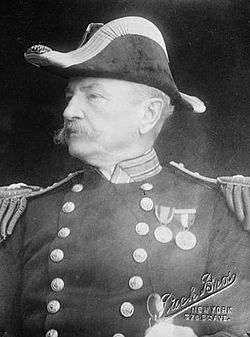 |
January 1913 | September 1914 |
| 6 | Frank F. Fletcher[32] | |
 |
September 1914 | June 1916 |
| 7 | Henry T. Mayo | |
June 1916 | June 1919 | |
| 8 | Henry B. Wilson | |
June 1919 | June 1921 | |
| 9 | Hilary P. Jones | |
June 1921 | December 1922 | |
| 10 | Ernest J. King[33] | |
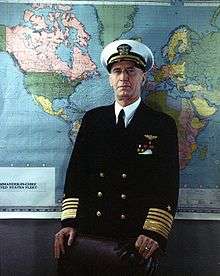 |
1 February 1941 | 30 December 1941 |
| 11 | Royal E. Ingersoll[34] | |
 |
30 December 1941 | 15 November 1944 |
| 12 | Jonas H. Ingram | |
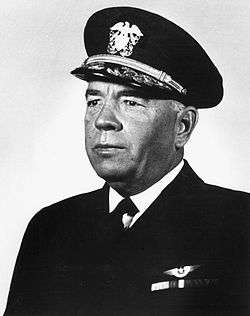 |
15 November 1944 | 26 September 1946 |
| 13 | Marc A. Mitscher | |
 |
26 September 1946 | 3 February 1947 |
Commander-in-Chief, U.S. Atlantic Fleet and Commander-in-Chief, U.S. Atlantic Command
| # | Name | Rank | Picture | Start of tenure | End of tenure |
|---|---|---|---|---|---|
| 14 | William H. P. Blandy | |
 |
3 February 1947 | 1 February 1950 |
| 15 | William M. Fechteler | |
 |
1 February 1950 | 15 August 1951 |
Commander-in-Chief, U.S. Atlantic Fleet, Commander-in-Chief, USLANTCOM and SACLANT
| # | Name | Rank | Picture | Start of tenure | End of tenure |
|---|---|---|---|---|---|
| 16 | Lynde D. McCormick | |
 |
15 August 1951 | 12 April 1954 |
| 17 | Jerauld Wright | |
 |
12 April 1954 | 28 February 1960 |
| 18 | Robert L. Dennison | |
 |
28 February 1960 | 30 April 1963 |
| 19 | Harold P. Smith | |
 |
30 April 1963 | 30 April 1965 |
| 20 | Thomas H. Moorer[35] | |
30 April 1965 | 17 June 1967 | |
| 21 | Ephraim P. Holmes | |
 |
17 June 1967 | 30 September 1970 |
| 22 | Charles K. Duncan | |
 |
30 September 1970 | 31 October 1972 |
| 23 | Ralph W. Cousins | |
 |
31 October 1972 | 30 May 1975 |
| 24 | Isaac C. Kidd, Jr. | |
 |
30 May 1975 | 30 September 1978 |
| 25 | Harry D. Train II | |
 |
30 September 1978 | 30 September 1982 |
| 26 | Wesley L. McDonald | |
 |
30 September 1982 | 4 October 1985 |
Commander-in-Chief, U.S. Atlantic Fleet and Deputy Commander-in-Chief, U.S. Atlantic Command
| # | Name | Rank | Picture | Start of tenure | End of tenure |
|---|---|---|---|---|---|
| 27 | Carlisle A. H. Trost[36] | |
4 October 1985 | 30 June 1986 | |
| 28 | Frank B. Kelso II[37] | |
30 June 1986 | 16 September 1986 |
Commander-in-Chief, U.S. Atlantic Fleet
| # | Name | Rank | Picture | Start of tenure | End of tenure |
|---|---|---|---|---|---|
| 28 | Frank B. Kelso II[37] | |
16 September 1986 | 4 November 1988 | |
| 29 | Powell F. Carter, Jr. | |
 |
4 November 1988 | 31 January 1991 |
| 30 | Paul David Miller | |
 |
31 January 1991 | 13 July 1992 |
| 31 | Henry H. Mauz, Jr. | |
 |
13 July 1992 | 5 October 1994 |
| 32 | William J. Flanagan, Jr. | |
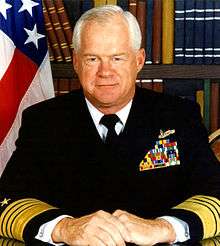 |
5 October 1994 | 20 December 1996 |
| 33 | J. Paul Reason[38] | |
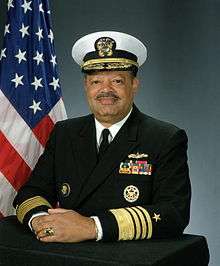 |
20 December 1996 | 17 September 1999 |
| 34 | Vern Clark | |
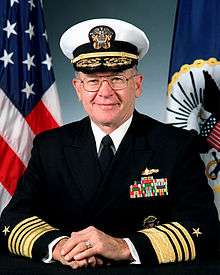 |
17 September 1999 | 23 June 2000 |
| 35 | Robert J. Natter | |
 |
23 June 2000 | 1 October 2002 |
Commander-in-Chief, U.S. Atlantic Fleet and Commander, U.S. Fleet Forces Command
| # | Name | Rank | Picture | Start of tenure | End of tenure |
|---|---|---|---|---|---|
| 35 | Robert J. Natter | |
 |
1 October 2002 | 24 October 2002 |
Commander, U.S. Atlantic Fleet and Commander, U.S. Fleet Forces Command
| # | Name | Rank | Picture | Start of tenure | End of tenure |
|---|---|---|---|---|---|
| 35 | Robert J. Natter | |
 |
24 October 2002 | 3 October 2003 |
| 36 | William J. Fallon | |
 |
3 October 2003 | 18 February 2005 |
| 37 | John B. Nathman | |
 |
18 February 2005 | 22 May 2006 |
Commander, U.S. Fleet Forces Command
| # | Name | Rank | Picture | Start of tenure | End of tenure |
|---|---|---|---|---|---|
| 37 | John B. Nathman | |
 |
22 May 2006 | 16 May 2007 |
| 38 | Gary Roughead | |
_Adm._Gary_Roughead.jpg) |
17 May 2007 | 28 September 2007 |
| 39 | Jonathan W. Greenert | |
 |
29 September 2007 | 23 July 2009 |
| 40 | John C. Harvey, Jr. | |
 |
24 July 2009 | 14 September 2012 |
| 41 | William E. Gortney | |
 |
14 September 2012 | December 2014 |
| 42 | Philip S. Davidson | |
 |
19 December 2014 | Incumbent |
See also
Notes
- ↑ U.S. Northern Command Fact Sheet - U.S. Fleet Forces Command
- ↑ U.S. Strategic Command's Service Components
- ↑ Fleet Forces Command, U.S. Fleet Forces Command Mission
- ↑ Svonavec, Stephen. "US Navy Atlantic Fleet, January 1, 1913". www.fleetorganization.com. Retrieved 2016-09-21.
- 1 2 "U.S. Navy, Battleships, A Short History". Retrieved 24 December 2007.
- ↑ "Glossary of U.S. Naval Abbreviations (OPNAV 29-P1000)". Archived from the original on 24 December 2014.
- ↑ Orbat.com/Niehorster, http://niehorster.org/013_usa/_41_usn/_usn.html
- ↑ This article incorporates text from the public domain Dictionary of American Naval Fighting Ships.
- ↑ HyperWar: Administration of the Navy Department in World War II [Chapter 4], accessed April 2011
- ↑ Naval Historical Center, Caribbean Tempest: The Dominican Republic Intervention of 1965, accessed August 2010
- 1 2 "Cuban Missile Crisis, 1962: Online Documentation". Archived from the original on 5 January 2015.
- ↑ Petty, Dan. "The US Navy -- Fact File: Fleet Ballistic Missile Submarines - SSBN". www.navy.mil. Retrieved 2016-09-21.
- ↑ Federation of American Scientists
- ↑ Sean P. Milligan, Quonset Point Naval Air Station, 1996, 127.
- ↑ 'Fleet's structure reorganized,' All Hands, September 1995, p.1-2
- ↑ A Brief History Of The U.S. Fleet Forces Command Archived 5 October 2006 at the Wayback Machine.
- ↑ "Navy Carrier Strike Group Deployment Schedules to Shift". NNS090911-22. U.S. Fleet Forces Command. 11 September 2009. Retrieved 27 December 2012.
- ↑ Ensign Michael Hatfield, USN (19 April 2012). "Enterprise Completes Sea Trials, Rejoins the Fleet". NNS100419-03. USS Enterprise Public Affairs. Retrieved 2012-06-02.
- ↑ "One of region's four-star admirals heads off to Washington". Retrieved 2016-09-21.
- ↑ "Navy's Fleet Forces Command taking over Second Fleet duties". WVEC.com. 1 July 2011. Archived from the original on 21 September 2011.
- ↑ "USFF Commanders Guidance Brief to Senior Staff 17 Sep_FINAL". Scribd.com. 17 September 2012. Retrieved 2012-04-15.
Slides 21, 45, 46
- ↑ "Document: The Navy’s New Deployment Plan". News Blog. United States Naval Institute. 24 January 2014. Retrieved 2014-01-24.
- 1 2 3 4 5 Admiral William E. Gortney, USN (October 2012). "Commander's Vision and Guidance: Executive Summary". Retrieved 2012-03-17.
Pages 1—4.
- ↑ Admiral Jonathan Greenert, USN (2012). "CNO’s Navigation Plan 2013-2017" (PDF). Retrieved 2012-03-17.
- 1 2 3 4 5 6 7 8 9 10 "USFF Commanders Guidance Brief to Senior Staff 17 Sep_FINAL". Scribd.com. 17 September 2012. Retrieved 2012-03-15.
Slides 22, 43—49.
- 1 2 3 4 "Fleet Forces Commander to be Naval Component for US NORTHCOM". Documents. United States Navy. 22 May 2013. Retrieved 2013-05-21.
OPNAVNOTE 5400 Ser DNS-33/13U102246 dated 17 May 2013.
- ↑ "Rear Admiral Mark D. Guadagnini Director, Maritime Headquarters, U.S. Fleet Forces Command". Official Biography. United States Navy. 6 December 2012. Retrieved 2012-03-20.
- ↑ , U.S. Fleet Forces Command. Accessed 26 Sep 2012.
- ↑ , Naval Meteorology and Oceanography Command. Accessed 26 Sep 2012.
- ↑ Task Force 83
- 1 2 "Rename and Modify Mission of Commander, Patrol and Reconnaissance Group Atlantic and Change Immediate Superior in Command of Patrol Squadron Three Zero" (PDF). Documents. United States Navy. 9 July 2012. Retrieved 2013-10-08.
DNS-33/12U102106. Formerly known as Patrol and Reconnaissance Group Atlantic.
- ↑ Fletcher originally assumed office as a rear admiral then was promoted to admiral in 1915 bypassing the rank of vice admiral.
- ↑ King was promoted to Fleet Admiral on 17 December 1944. He later served as Commander-in-Chief, United States Fleet and as the 9th Chief of Naval Operations.
- ↑ Ingersoll later served as Commander, Western Sea Frontier.
- ↑ Moorer later served as the 18th Chief of Naval Operations and as the 7th Chairman of the Joint Chiefs of Staff.
- ↑ Troust later served as the 23rd Chief of Naval Operations.
- 1 2 Kelso later served as the 24th Chief of Naval Operations.
- ↑ Reason was the first African-American to become a four-star admiral.
Further reading
- "Strict Neutrality - Britain and France at War with Germany: September 1939 - May 1940". United States Navy and World War II. Naval-History.net. Archived from the original on 2006-11-18. Retrieved 2007-05-14.
- Hutchins, Susan G.; William G. Kemple; David L. Kleinman; Scot Miller; Karl Pfeiffer; Shawn Weil; Zachary Horn; Matthew Puglisi; Elliot Entin (2009). Maritime Headquarters with Maritime Operations Center: A Research Agenda for Experimentation. Monterey, California: Naval Postgraduate School.
- Lawlor, Maryann (November 2007). "A New Role for Maritime Headquarters". SIGNAL. Fairfax, Virginia: AFCEA. Retrieved 2013-03-18.
- Capt. William E. Scarborough, USN (Ret.). "The Neutrality Patrol: To Keep Us Out of World War II?" (PDF). Naval Historical Center, United States Navy. Retrieved 2007-05-14.
External links
- U.S. Fleet Forces Command official website
- Former commanders of U.S. Fleet Forces Command
- More detail about the Atlantic Fleet and its components
- History (U.S. Fleet Forces Command website)

